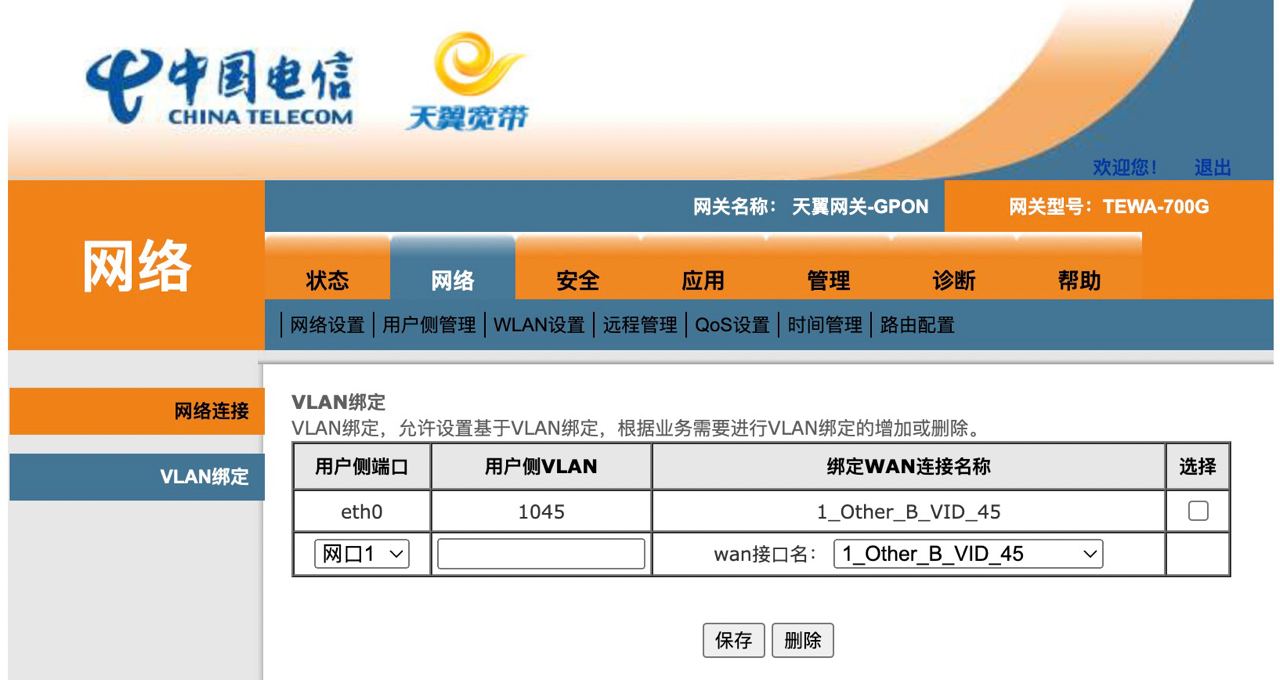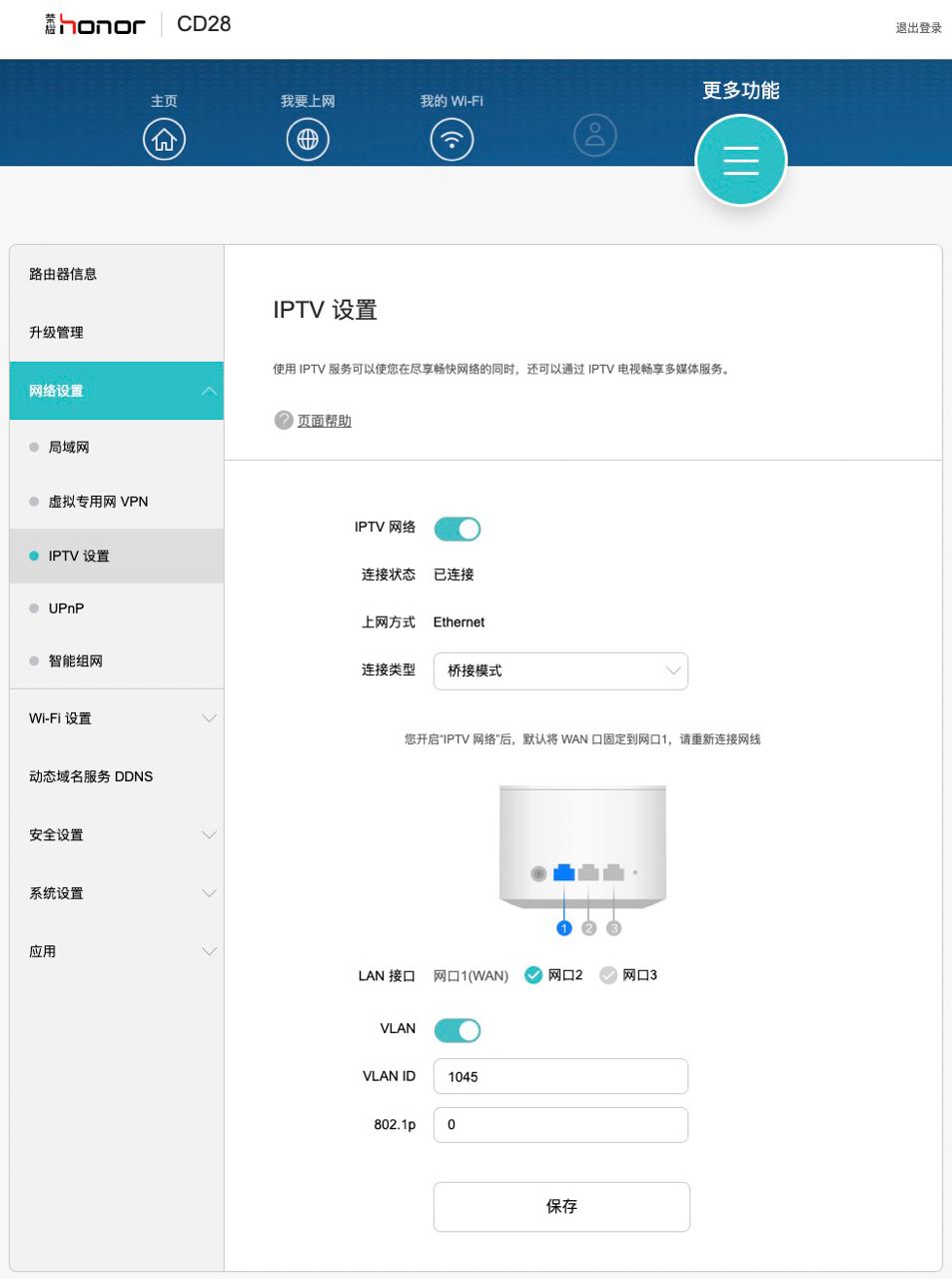Implementing IPTV and Internet Channel Reuse Using the VLAN Binding Function of the Optical Modem
Background
In a new network environment, the wireless AP is located in a metal weak current box, resulting in poor signal strength. The network port in the living room is connected to the IPTV interface of the optical modem with only one line, which cannot carry internet services. This is clearly a problem caused by not adequately planning during the renovation, leaving only one line. How can we move the wireless access point from the weak current box to the living room without running additional cables while ensuring that the normal internet needs of the entire house are not affected?
My first thought was VLAN. To briefly explain the role of VLAN, it allows traffic originally on two physical cables to be transmitted over a single cable. At layer 2, VLAN is used to segment different data loads and then trunk all onto one physical line. To achieve this, according to traditional thinking, I would need to place my own switch (named S1) next to the optical modem in the weak current box, converting the original different service traffic into my own VLAN traffic (the specific operations will be discussed later, here I’ll focus on the principle), and then use the line from the weak current box to the living room for transmission, effectively aggregating the traffic. Once the aggregated traffic reaches the living room through the original line, I can use another switch (named S2) to separate the VLAN-tagged traffic and provide it to the router and the IPTV box from the telecom, thus completing the setup.
As can be seen, through reasonable VLAN planning, we can repeatedly utilize the embedded network cable. S1 and S2 act as two core switches, while the incoming network cable from the weak current box to the living room is equivalent to a busy trunk line (backbone network).
Practice
In a home LAN environment, it is difficult to fit a layer 2 switch with VLAN functionality into the weak current box, leading to a stalemate. However, by utilizing the VLAN binding of the optical modem, we can take an alternative route by tagging the IPTV channel traffic reaching the living room, which can then be separated by the router.
Obtaining the Optical Modem’s Privileged User Password
First, we log into the optical modem’s management page using the general user useradmin. In the browser, enter:
view-source:http://192.168.1.1:8080/register.cgi
Then obtain the sessionKey, and input:
http://192.168.1.1:8080/telandftpcfg.cmd?action=add&telusername=<telnetusername>&telpwd=<telnetpassword>&telport=23&telenable=1&ftpusername=<ftpusername>&ftppwd=<ftppassword>&ftpport=21&ftpenable=1&sessionKey=<sessionKey>
This will enable Telnet.
Next, we Telnet into the optical modem,

thus obtaining the privileged user password.
Setting Up VLAN Binding

This step is very simple: set the optical modem’s eth0 (Gigabit port) to user-side vlan1045, binding the WAN to the IPTV service interface.
Setting Up the Router

Coincidentally, this Huawei router supports single WAN multi-service functionality, which means it can transparently pass IPTV services to the LAN2 port.
The operation is also straightforward. We need to set the vlanID to the previously mentioned 1045.
At this point, the IPTV channel from the router to the optical modem is connected, and the IPTV box can dial in normally.
Conclusion
Through this method, we can move the wireless router to the living room, thereby improving the weak wireless signal situation in the living room.